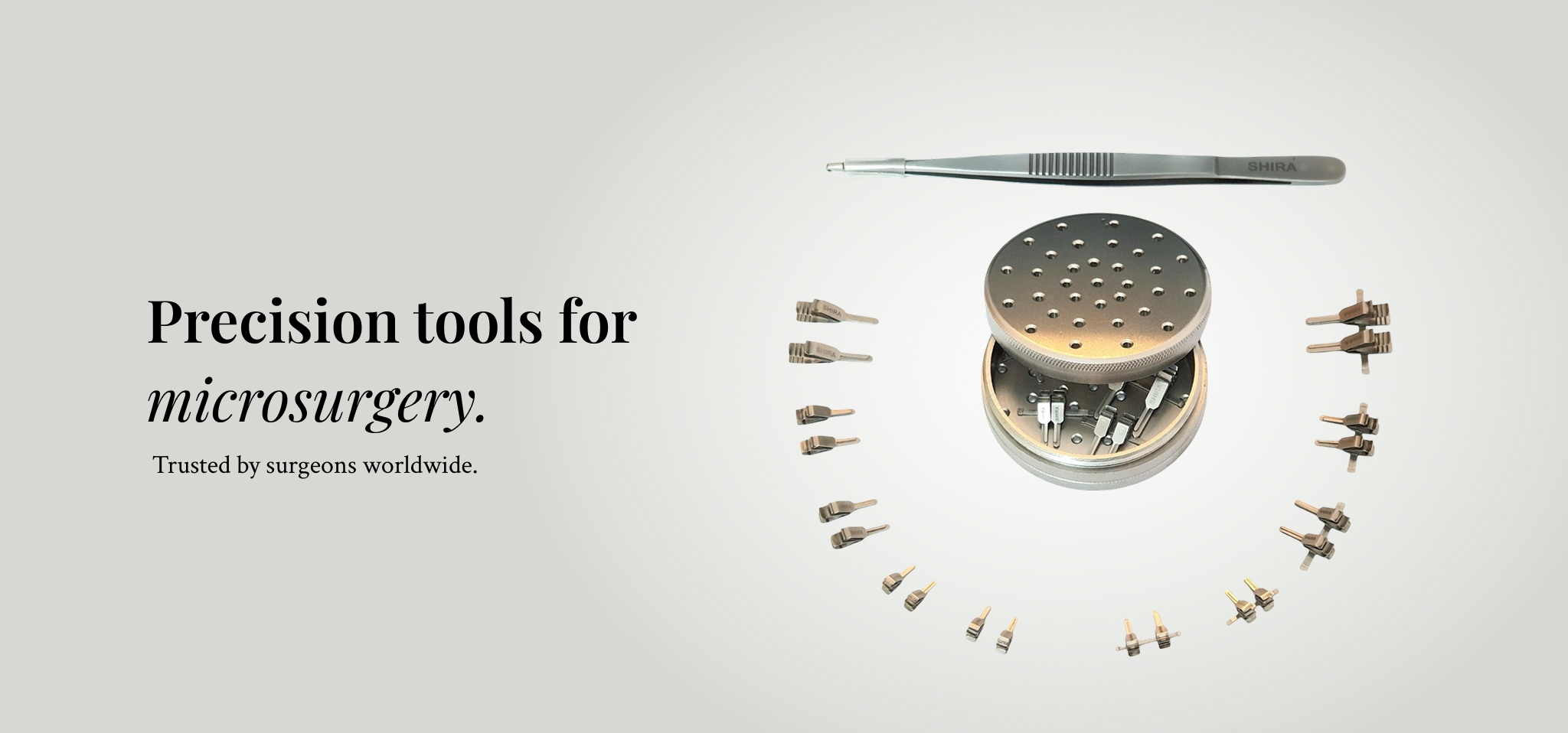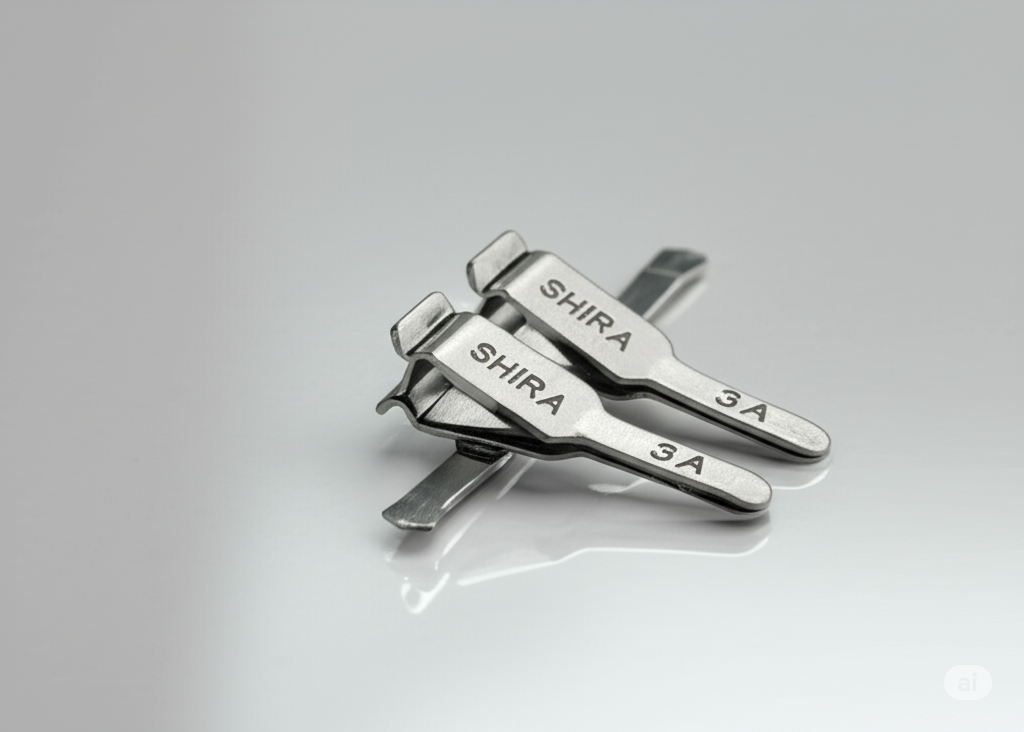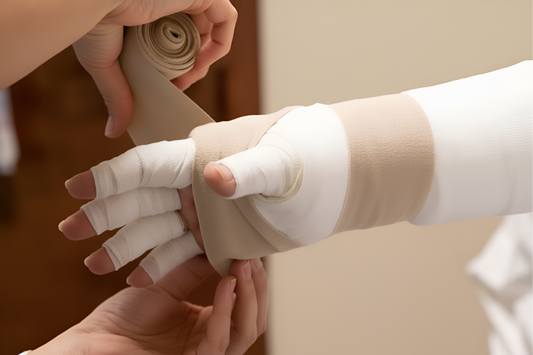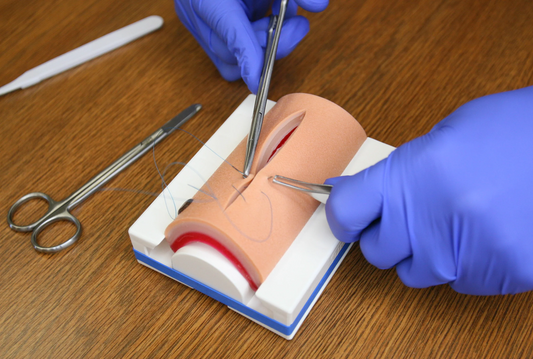Collection: Clamps
Patented 3-Jaw Clamp Series

-
Clamp Applicator - 6 inch
Regular price From Rs. 0.00Regular priceUnit price / perRs. 18,000.00Sale price From Rs. 0.00Sale -
Clamp Sterilization Case
Regular price Rs. 12,500.00Regular priceUnit price / perRs. 20,000.00Sale price Rs. 12,500.00Sale -
Acland Micro-Vascular Single Clamp (Pair)
Regular price From Rs. 18,500.00Regular priceUnit price / perRs. 33,500.00Sale price From Rs. 18,500.00Sale -
Acland Micro-Vascular Approximator Clamp
Regular price From Rs. 22,500.00Regular priceUnit price / perRs. 38,500.00Sale price From Rs. 22,500.00Sale -
3 Jaw Micro-Vascular Approximator Clamp
Regular price From Rs. 25,000.00Regular priceUnit price / perRs. 55,000.00Sale price From Rs. 25,000.00Sale
3-Jaw Approximator Micro Surgical Clamps
Frequently Asked Questions: Microsurgical Instruments

How should a 3‑jaw micro clamp be cleaned and maintained?
To prevent blood clots from damaging the mechanism, the clamp should be rinsed immediately after use and immersed in a hemolytic cleaning solution for 30 minutes, moving the sliding bar to remove debris. After cleaning, rinse with high‑pressure water and sterilize by steam autoclave in accordance with hospital protocol.
Do Shira 3‑jaw clamps come in different patterns or finishes?
Yes. As with two‑jaw micro clamps, 3‑jaw clamps can be ordered in venous (‘V’) or arterial (‘A’) patterns. The ‘V’ pattern is used for most veins and arteries, while the ‘A’ pattern has a slight incurve at the tip for thick‑walled or slippery arteries. Finishes include matte and black; the black finish reduces glare and eye fatigue in the operating theatre.
How does the 3‑jaw clamp minimize vessel trauma?
The clamp’s jaws have a non‑serrated grip that distributes pressure evenly, helping avoid over‑pressure peaks that could damage the vessel wall. Each clamp size is calibrated for a specific vessel diameter range, so using the correct size maintains low clamping pressure and protects delicate vessels.
Which surgeries benefit from a 3‑jaw micro clamp?
These microvascular clamps are used in procedures requiring rapid vessel approximation and clear lumen visibility—such as free flap reconstructions, replantations, bypass grafts and complex anastomoses. By everting vessel ends, the 3‑jaw clamp makes it easier for surgeons to place sutures accurately and quickly, allowing surgeons to perform these procedures more efficiently and safely.
What makes Shira’s 3‑jaw microvascular clamps different from traditional two‑jaw clamps?
- Shira’s patented three‑jaw design everts the ends of a vessel so the entire lumen is visible, which reduces the risk of “back‑walling” and can make microvascular anastomosis up to twice as fast. Traditional two‑jaw clamps simply pinch the vessel, whereas the third jaw provides a better working view and more even pressure distribution.
Latest Surgical News
View all-

The Most Effective Treatments for Lymphedema: A...
Discover effective treatments for lymphedema in this comprehensive guide. Find practical solutions to manage your symptoms and improve your quality of life.
The Most Effective Treatments for Lymphedema: A...
Discover effective treatments for lymphedema in this comprehensive guide. Find practical solutions to manage your symptoms and improve your quality of life.
-

Trauma Reconstruction - Restoring Lives Beyond ...
Trauma reconstruction goes beyond survival—it’s about restoring function, dignity, and quality of life after serious injury. From ancient skin grafting to modern microsurgery, 3D printing, and regenerative medicine, advances in...
Trauma Reconstruction - Restoring Lives Beyond ...
Trauma reconstruction goes beyond survival—it’s about restoring function, dignity, and quality of life after serious injury. From ancient skin grafting to modern microsurgery, 3D printing, and regenerative medicine, advances in...
-

The Scope of Reconstructive Surgery- Role of Mi...
Reconstructive surgery restores more than appearance—it brings back dignity, function, and identity. With microsurgery at its core, using delicate techniques to reconnect vessels and nerves, it transforms lives after trauma,...
The Scope of Reconstructive Surgery- Role of Mi...
Reconstructive surgery restores more than appearance—it brings back dignity, function, and identity. With microsurgery at its core, using delicate techniques to reconnect vessels and nerves, it transforms lives after trauma,...













